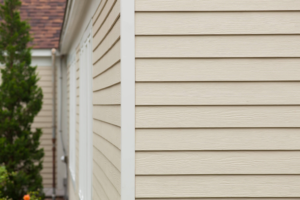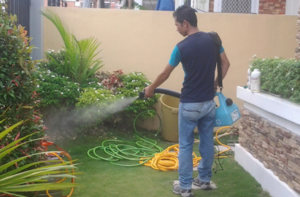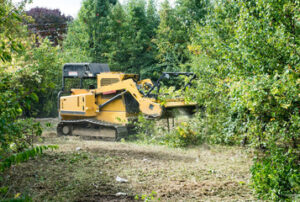Many homeowners are drawn to vinyl siding for its durability and low maintenance requirements. It can withstand harsh weather conditions and last up to 40 years.
Unlike wood, brick, or stucco, vinyl doesn’t require painting, scraping, or replacing. It also resists rot and insects. Contact Vinyl Siding Charleston SC now!

However, a homeowner should consider vinyl’s pros and cons before deciding.
Low Maintenance
For good reason, vinyl siding is the most popular home exterior product on the market. It’s durable, attractive and affordable. But it’s not without its drawbacks.
While vinyl’s plastic composition resists moisture, rotting, and pests, it does require periodic cleaning and maintenance. Fortunately, this can be done with a power washer—with care. To prevent damage, it’s important to choose a pressure washer with a low-pressure setting and a wide nozzle. Then, be sure to use a protective cover to protect nearby plants and to wear gloves and eye protection when using chemicals.
Unlike other home exteriors, vinyl doesn’t require painting or refinishing, which can be costly and time-consuming. This means fewer toxic chemicals are released into the environment when cleaning or working on your home’s exterior. In addition, the lack of paint also eliminates a large portion of your house’s carbon footprint.
If you’re considering vinyl siding, be sure to work with a company that manufactures responsibly and uses eco-friendly packaging. They should also be third party certified to verify their green claims.
Vinyl is extremely versatile, with hundreds of colors and designs to customize your home’s appearance. It’s available in a variety of finishes to match your décor, whether you prefer natural wood or the more contemporary look of painted vinyl. In addition, you can choose from a range of textures to give your home an authentic feel.
The exterior of your home says a lot about you and your family, but it’s also the first thing potential buyers will notice when they walk up to your front door. To make your home’s exterior stand out, consider choosing ProVia’s high-quality, low-maintenance vinyl.
Regular visual inspections can help homeowners detect damage and wear early and keep the cost of repair and replacement costs to a minimum. Look for signs of fading or discoloration, cracks or warping, loose or broken panels, and mold or mildew growth. With these simple steps, you can keep your home’s exterior looking like new for years to come. In turn, this can boost your home’s resale value and provide you with peace of mind knowing that your home is protected for a long time.
Durability
As homeowners, there is enough to do around the house without adding to our list by choosing a cladding product that requires a lot of upkeep. With vinyl siding, the minimal maintenance factor is one of its biggest selling points. The fact that it doesn’t require repainting and is resistant to fading and insects means that once it’s installed, there’s not much to worry about. A quick rinse down with the hose once or twice a year should be all that it needs to stay looking good for decades!
Many homeowners also appreciate that vinyl is an energy efficient option. This is because the product offers insulation, which can help reduce utility bills by regulating home temperatures. As with any cladding product, though, this is only a benefit if the right vinyl is chosen and properly installed.
The resale value of a property is another key concern when choosing the best product for a particular home. As such, vinyl is a popular choice because it has the potential to boost resale values due to its durability and low maintenance factor.
It’s important to choose a quality vinyl siding with a high resistance to harsh weather, as this will help ensure longevity. Look for products that are able to withstand thermal expansion and contraction, as well as winds up to 200 miles per hour, and that have been tested against salt spray and other environmental factors in your area.
One of the biggest concerns that some homeowners have about vinyl is its plastic appearance. While this is a valid point, significant improvements in manufacturing technology now allow for vinyl to be made with realistic wood grain textures that make it more visually appealing. With so many color and style options available, finding the perfect product for your home will help you avoid the plastic look that some people may be worried about.
In addition, some manufacturers offer warranties that can last up to 40 years. This provides peace of mind that your investment is secure and that you’ll be able to sell your home in the future without having to replace it.
Aesthetics
The exterior of your home says a lot about you and your personal taste. It is the first impression that visitors and passers-by will have of your dwelling, so you should always aim to make it look its best.
If you are looking for a durable and affordable way to improve the aesthetics of your home, vinyl siding may be the answer. It comes in a variety of colors and textures to fit different architectural styles and can be combined with various trim options to create a unique appearance. It also has a low-maintenance, easy-to-clean surface that won’t require frequent repainting or scraping like some other materials.
Modern vinyl siding looks less plastic-y than it did when it was first introduced, and some homeowners even find that it can convincingly mimic natural materials like wood grain or stone. Additionally, advances in manufacturing have allowed for the production of insulated vinyl siding that offers energy savings as well as increased durability.
Despite its many benefits, vinyl siding has several drawbacks that you should be aware of before making your final decision. One of the most common concerns is that it can be prone to discoloration due to harsh exposure to sunlight. Fortunately, new technology has addressed this issue by incorporating fade-resistant pigments into the vinyl to help it maintain its color and finish longer.
Another concern is that vinyl can be prone to melting if installed in cold climates. This occurs when the vinyl absorbs heat from direct sunlight or reflects the sun’s rays onto it. The heat is then transferred to the interior of your house, which can melt or warp the vinyl over time. Thankfully, this isn’t a widespread problem and most vinyl manufacturers have addressed it by improving the manufacturing process to prevent this from happening.
Another consideration is that vinyl siding might not be suitable for historic or architecturally significant homes in some neighborhoods. This is because most historic areas have strict guidelines about updating the exterior of a house, and using vinyl might detract from the value of the property.
Easy Installation
The installation process for vinyl siding is relatively simple and quick. This is primarily due to the panels being made from pre-cut sections that are then joined together. The lengths of siding are also measured to ensure that they fit the walls without any gaps or overlaps. In general, it is best to install vinyl siding over a clean, dry surface. In order to begin, a homeowner must clear the work area by removing any exterior fixtures such as down-spouts, moulding, mailboxes and wall-mounted utility equipment. It is also recommended to install a water-resistive barrier around the house before beginning the project. Finally, it is important to know that the installation process requires a level of precision and skill in order to produce a professional result.
Historically, one of the biggest concerns regarding vinyl siding was its tendency to fade in color after prolonged exposure to sunlight. However, advancements in production and finish options have greatly reduced this issue. Additionally, newer products are designed to withstand damage from wind and rain and lengthy warranties back many.
When it comes to installation, homeowners are advised to follow the steps in the manual provided by the manufacturer of their chosen product. It is also helpful to have the proper tools for the job, including a hammer, utility knife, level, tape measure and a saw. It is essential to use a ladder when working at heights.
While installing vinyl siding, homeowners must take into account that the material expands and contracts in response to temperature changes. If this is not taken into consideration, it can cause the panels to warp or buckle. To avoid this, homeowners should make sure that they leave a space of at least 1/4 of an inch between each panel to allow for expansion and contraction.
To install the vinyl siding, first it must be cut to the desired size using a saw with a vinyl siding blade or tin snips. Once the pieces have been cut, they must then be nailed in place with corrosion-resistant nails. If a window or door is located in a wall, a piece of J-channel must be installed. This is done by measuring the width of the window and cutting a piece of J-channel to that measurement. It is then nailed in place and trimmed with vinyl corner pieces and end caps.








